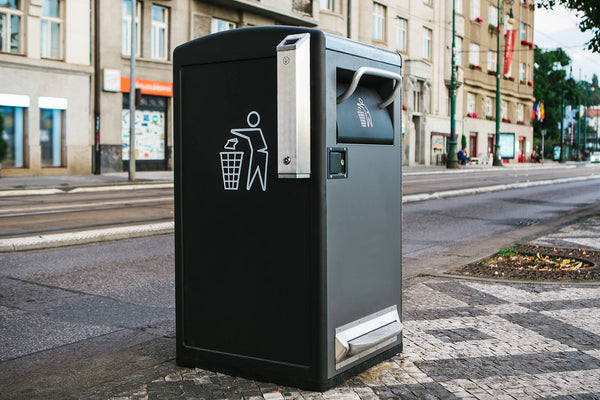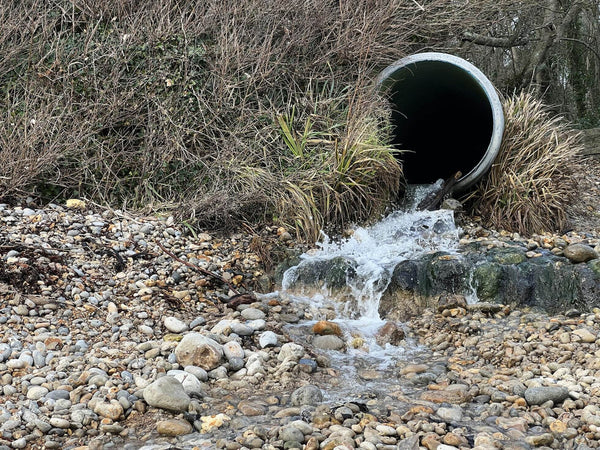As frosty winters in the UK come around, many of us have to familiarise ourselves with grit bins to understand their purpose.
Grit bins play a key part in keeping our roads and pathways safe, and are often purchased and allocated by local authorities for public use.
In this blog, you’ll learn everything you need to know about public and private grit bins, why they are important, and how to use them in the UK.
What are grit bins?
Usually bright yellow and made of heavy duty plastic, it’s likely that you’ve spotted a public grit bin on the side of a road at least once during your car journeys. Inside these containers is a combination of salt and grit, which is sprinkled on roads and pathways to stop the ice from freezing and causing potential danger.
How do grit bins work?
When the outside temperature reaches around -6 to -8 degrees Celsius, salt can be used to prevent the water from freezing and turning into ice, which can be hazardous to drivers. The salt reacts with the water in the ice and snow to start a dissolving process, as the freezing point of the water and snow lowers.
When to use a grit bin

The more snow on the ground, the less effective the salt from a grit bin will be.
Therefore, it’s best to grit your nearby roads and pathways as soon as heavy snow or frost is predicted in the weather forecast. Icy roads are dangerous for motorists and pedestrians alike, so addressing the hazard early is incredibly important in order to prevent slippery surfaces and black ice.
How to use a grit bin
Always use a shovel when taking salt from a grit bin. It’s recommended you wear gloves too, to further protect your hands.
If snow has already fallen and settled on the road, move some of it aside and/or break up the ice before laying down the grit on the surface.
Try to aim for an even spread across the road, focusing on where car tyres will be driving. As vehicles drive over the grit, it helps to spread the salt across the road, providing greater coverage and melting more ice.
Can anyone use a public grit bin?
Many councils place yellow grit bins around the area for the general community to use, provided you are using the grit to treat public roads and pavements.
Grit bins are not allowed to be used to clear private roads, including driveways or garden paths, and you are not allowed to take the salt from the grit bin and sell it on either.
Where is my nearest grit bin?

Your local council website will provide information on where your nearest grit bin is located, as well as gritter routes so you know which roads will need to be salted manually.
Some councils provide an interactive grit bin map, while others may need to be contacted directly in order to learn your salt bin location.
Local community groups may also be able to help you locate your nearest grit bin. Going for a drive around your area is another good way to find grit bins too – just remember to do this before the cold weather hits, so you are well prepared.
How to request a grit bin
If you find that there are no grit bins within a reasonable distance of your home, you can request a grit bin from your local council. This is usually done by filling in a form online or contacting them over the phone.
Some councils will also restock grit bins at residents’ requests, though this varies depending on where you live, as others do have a refilling schedule of their own. You can also notify your local council if your grit bin is missing or broken, and they will send out a replacement.
Where to buy a grit bin
Public grit bins are not for use on private paths or driveways. This means that, if you do have an area around your home that you want to keep ice-free, you will need to get a bin from a grit bin supplier.
Wheelie Bin Solutions sell a 100 litre salt grit bin for personal use in a bright yellow colour, which is easy to spot on dark winter evenings. Manufactured from HDPE, this grit bin is designed to protect against the elements – the top is even slightly sloped to prevent ice and snow build up. You can also protect your grit from being used by others by opting for a hasp and staple lock too, at an extra charge.
In the summer months, the grit bin can be easily packed and stored away to save space and, if you have multiple, are stackable too.
Grit salt for de-icing can be found in most hardware or DIY shops, and is also available readily online. It’s generally inexpensive, and offers a cheaper way of protecting your property from the hazards of ice and frost.








Craig Pryce
With over 17 years of experience in the waste and recycling industry, Craig is passionate about making recycling easier and reducing the negative impact of litter. He has been the managing director of Wheelie Bin Solutions (WBS) since January 2016, and prides the company on his expert knowledge, top-quality products, and customer service. His proudest moment was when WBS supported the 2012 Olympic Games, working in partnership with Contenur UK to supply over 9000 bin containers to all Olympic venues. Craig is always keen to share his knowledge, so whether you need advice about the benefits of a wheelie bin lock, or ideas for alternative uses for your wheelie bin, Craig will ensure your recycling and waste disposal habits are gold medal worthy.